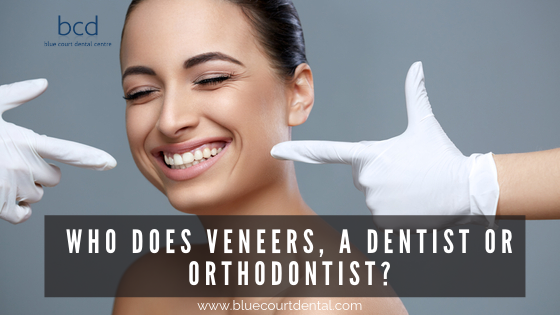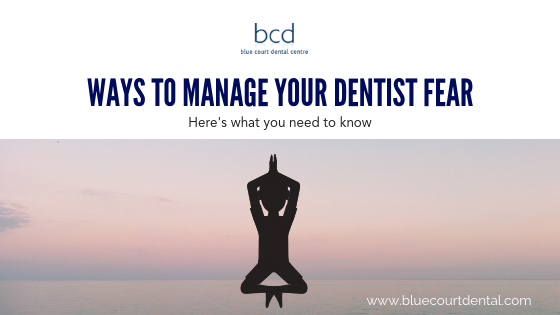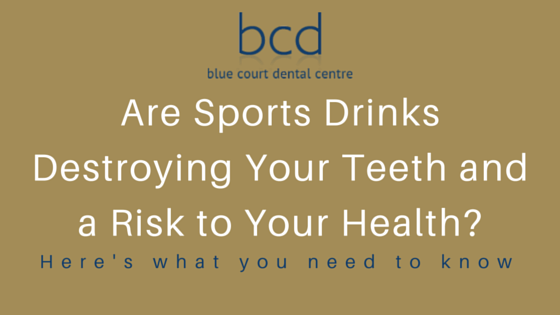Category: Questions & Answers
Questions and answers that patients ask about the range of dental treatments available from blue court dental centre, here in Harrow.
Do Braces Hurt?
Ways to manage your dentist fear
Why do I have tooth sensitivity?
Many people suffer from sensitive teeth for a variety of reasons, this article highlights why you may suddenly develop sensitive teeth, what you can do about it at home, what treatments the dentist may be able to offer you and how to reduce the pain from tooth sensitivity.
What causes tooth sensitivity?
 Your teeth are made up of three primary layers:
Your teeth are made up of three primary layers:
- The nerve and pulp. This is the deepest living part of your tooth, it contains the nerve and has blood flowing through it to keep your tooth alive, it is protected by two out of protection layers.
- The dentine. This is the softer portion of your tooth, it gives the tooth it’s primary colour and its role is to support the hard yet brittle outer enamel.
- The enamel. This is the hardest substance in the human body and protects the outer portion of your tooth.
Sensitivity occurs when hot or cold substances, such as eating ice cream, get too close to the nerve, there are many reasons this could happen, including:
- Tooth wear caused by over brushing.
- Gum recession caused by over by over brushing or general ageing.
- Cracked teeth caused by trauma.
- Decay in teeth caused by poor oral hygiene.
- Tooth grinding or clenching.
Why are my teeth suddenly sensitive?
The key to understanding this is to think about how the hot or cold feeling may be getting through to the nerve. If you have had a recent trauma then perhaps the tooth is correct. If you haven’t been to the dentist for a while perhaps there is an area of tooth which is decayed.
The image below shows gum tissue recession around the gum line, possibly caused by over brushing. The enamel is thin in this area which can easily lead to teeth sensitivity.
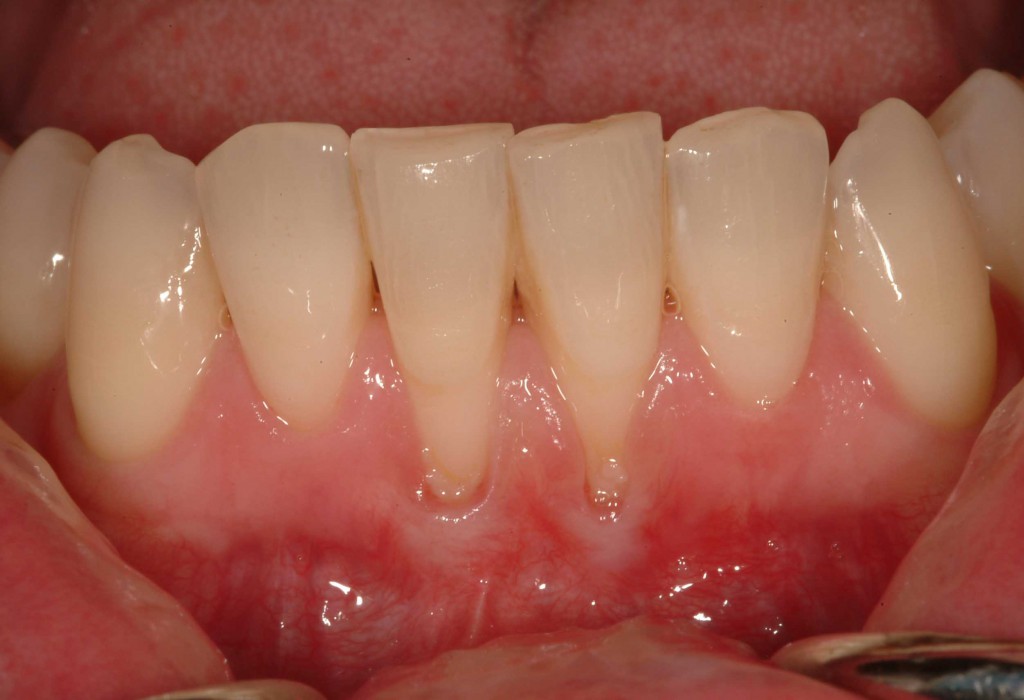
If you can’t immediately identify what the problem is then visiting a dentist or dental hygienist may be best option.
How do you stop sensitive teeth pain
If you have sensitive teeth with no obvious cause then you may find that using a protection and relief toothpaste such as Sensodyne may help.
How does Sensodyne work?
These toothpastes work because there are tiny holes, called tubules, in the dentine of your tooth. If the enamel becomes eroded away then these tubules can transmit the hot and cold through your tooth. These toothpastes work by quickly creating a barrier so that the hot and cold feeling can’t be transmitted to the nerve.
However, it’s worth noting that these types of toothpastes WILL NOT work if the sensitivity is caused by excessive enamel or dentine loss such as cavities, excessive wear or cracks caused by trauma.
How long does tooth sensitivity last?
Tooth sensitivity is usually only instantaneous when the nerve becomes exposed to hot or cold. Remove the hot or cold and the sensitivity goes away. However, the reality is that this is not practical to do on a day by day basis, we have to eat and drink after all! Unfortunately, if your teeth are sensitive they won’t get better on their own, you will either need to use a relief and protection toothpaste or visit a dentist to ascertain why your teeth are sensitive.
What does the dentist do for sensitive teeth?
The basic premise for reducing tooth sensitivity is to protect the outer surface of the tooth to prevent the hot and cold sensations been transmitted through to the nerve, or in extreme circumstances to remove the nerve itself. There are a variety of ways of treating sensitivity at the dentist, including but not limited to:
- Fluoride treatments to strengthen tooth enamel. These fluoride gels can be applied topically at the dentist or trays can be provided for use at home.
- Bonding. Composite bonding materials can be used to bonded to the outer surface of the tooth to rebuild the enamel where it has been lost. This can cover up the dentin hypersensitivity.
- Surgical gum graft (Please see the explanation video below). If the sensitivity is caused by excessive gum resorption which exposes the more sensitive root of the tooth then a gum graft to replacing some of the gum tissue may be undertaken to cover up some of this exposed area around the gum line.
- Root canal. In extreme circumstances a root canal can be used to remove the nerve of the tooth. This is not normally a preferred option and will only be undertaken in extreme circumstances.
Summary
One of the key things to focus on is brushing your teeth and maintaining good dental care throughout your life, ensuring you brush and floss regularly. Tooth sensitivity is a common problem, particularly in later life as the gum becomes more exposed and the teeth wear. Certainly, this is one of the best ways to prevent tooth sensitivity. If you are older then be aware about using a soft bristled toothbrush, watching to ensure you don’t consume too many acidic foods and drinks and be aware if you grind your teeth. Cold air can also affect sensitivity, so you may find you need to wear a scarf in cold weather.
What does a dental hygienist do and do I really need to go?
We get asked this question all the time at our dental practice in Harrow, Middlesex, people often wonder if a dental hygienist is just an excuse to get a little more money out of people… Some people wonder why the dentist can’t do the same job as the hygienist and have everything done in one appointment.
In this blog post we explain why the hygienist is so important and crucially, why the hygienist can save you money by helping you stay dentally fit and healthy.
What is dental plaque, tartar and calculus?
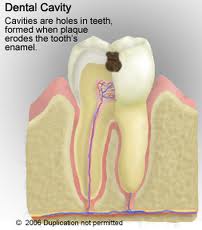 Dental plaque is a soft, sticky film that builds up on your teeth every day. This film contains millions of bacteria and as these bacteria feed on the sugar in your diet they excrete acid and it is this acid which can lead to tooth decay and gum disease. Tarter or calculus is when this soft, sticky film hardens, typically this is in between your teeth in difficult to reach areas where it is not removed each day. When it hardens into calculus this is where bacteria can lurk and excrete more acid directly onto your teeth.
Dental plaque is a soft, sticky film that builds up on your teeth every day. This film contains millions of bacteria and as these bacteria feed on the sugar in your diet they excrete acid and it is this acid which can lead to tooth decay and gum disease. Tarter or calculus is when this soft, sticky film hardens, typically this is in between your teeth in difficult to reach areas where it is not removed each day. When it hardens into calculus this is where bacteria can lurk and excrete more acid directly onto your teeth.
If this calculus remains in place for too long the gums can become inflamed, read and puffy. The acid can also eat away the hard outer enamel layer of your teeth, if this progresses then the teeth can begin to rot from inside!
What is the difference between a dentist and a dental hygienist?
A dental hygienist is uniquely trained to look after your dental health only. They have in-depth training to understand how and why your teeth and gums can become unhealthy, they are able to spot the early warning signs of gum disease, help you change habits which may be exacerbating the onset of gum disease and work with you to treat any gum disease.
Your dentist on the other hand, as well as doing all this will be treating any decay, helping to restore broken down teeth, replace missing teeth, straighten crooked teeth plus have a deeper understanding of the anatomy around your head, face and neck enabling them to spot the early warning signs of oral cancer as well as biting problems which can lead to headaches and neck pain.
In an allocated appointment time your dentist will be hard pushed to do the role of the hygienist as well, doubling the appointment time to give the dentist time would increase the cost to you, so seeing a hygienist not only ensures you see someone uniquely trained to help you with your dental health but also keeps costs down as the dentist is not doing it themselves.
A typical routine dental health check appointment with your dentist will last around 30 min, a typical routine dental hygiene appointment will also last about 30 min. It is quite usual to have a visit to the dentist and then the hygienist consecutively every six months. Many practices offer dental membership plans to help spread the cost of these appointments over an extended period throughout the year.
What is a scale and polish?
This is the common term used to describe removing calculus (scale) from your teeth and then polishing them to make it more difficult for the calculus to adhere again. A scale and Polish is however an oversimplification of what is actually done. Your hygienist will check the dental health of each individual tooth and surrounding gum area, they will assess your cleaning and diet habits to work out why calculus has built up in particular areas, they will then give you advice on how you can reduce this in future. Once the calculus has been removed the teeth will be polished and cleaned and flossed in between.
How often should you go to the dentist and hygienist?
If you haven’t been to the dentist or hygienist for some considerable time you may find that more frequent appointments are required in order to get your teeth and gums to a healthy state. Sometimes a monthly appointment at the hygienist are required for 3-4 months in order to do this. Once your dental health is in a satisfactory condition routine appointments at the dentist and hygienist are then recommended every 6 months.
What tools do dentists and hygienists use to clean teeth?
 Most dentists invest heavily in technology and equipment to ensure you receive the very best treatment. A clever piece of technology that many dentists use is an ultrasonic scaler. This uses ultrasound waves which are conducted through to the calculus on your teeth at the end of probe connected to an ultrasound device. The high frequency ultrasound dislodges the calculus from your teeth in a comfortable, painless and rapid fashion. Using this device means your hygienist can clean your teeth faster than using a hand-held instrument alone.
Most dentists invest heavily in technology and equipment to ensure you receive the very best treatment. A clever piece of technology that many dentists use is an ultrasonic scaler. This uses ultrasound waves which are conducted through to the calculus on your teeth at the end of probe connected to an ultrasound device. The high frequency ultrasound dislodges the calculus from your teeth in a comfortable, painless and rapid fashion. Using this device means your hygienist can clean your teeth faster than using a hand-held instrument alone.
As well as the ultrasound device your hygienist will also use various hand tools to clean in the difficult to reach areas in between your teeth. Right at the back of your mouth, in between the last molars can often be very tricky to reach with a toothbrush meaning calculus buildup readily in these areas. Cleaning in these areas and removing the calculus can be quite tricky sometimes, especially if teeth are very crooked.
How to remove calculus from your teeth?
Unfortunately the only way to remove calculus from your teeth safely is to visit your dentist and hygienist. Trying to pick away at home can result in damaging your delicate gums. If you visit your hygienist they can give you oral health advice as to the best way to keep your teeth as clean as possible and prevent the buildup of calculus in the first place.
Visiting the dentist and hygienist is an important thing to do if you wish to keep your mouth (and whole-body) as healthy as possible as well as keeping your overall dental costs as low by being dentally fit.
- Dr Dixit is the new President of British Academy of Cosmetic Dentistry - 28 May 2020
- Does Invisalign hurt? - 9 March 2020
- How Long Does Invisalign Take? - 27 February 2020
Why do my teeth look yellow?
This is a question we get asked lots at our dental practice here in Harrow, so we thought we would take some time to take a look at the common reasons why your teeth may not be quite as white as you’d like to be… Some of those reasons are obvious but others aren’t!
What are you eating?

It sounds quite obvious but there are many foods which have any impact on the colour of your teeth. Some foods stain your teeth directly whilst others contribute to dental decay by being rich in sugar.
Foods which contain high amounts of sugar feeds the acid excreting bacteria which live in your mouth, the more sugar there is in your food the more this bacteria is able to feed and excrete the bacteria which then attacks your teeth causing dental decay. Teeth can then become dark either through the dental decay or by the bacteria forming solid deposits, known as plaque, which then become stained by the strong colours in some foods.
Some food on the other hand is naturally dark staining such as dark berries, tea and red wine. These may stain your teeth on their own but the staining is compounded if you have plaque on your teeth caused by a combination of poor oral hygiene and sugar in your diet.
Of course, so many of us like to eat foods like this, so if we want our teeth to be bright and white then we just have to get on top of our dental healthcare!
Are you brushing as well as you could?
Even if your diet isn’t too rich in sugar and you avoid the food with strong colours then your teeth could still be yellow then it would likely that your oral health care routine isn’t as good as it should be.

Your mouth contains so many bacteria, more than the population of the world in fact, so it’s really important that you keep on top of this and remove as much bacteria and food as you can after each meal.
When brushing your teeth we recommend using a pea sized amount of fluoride toothpaste twice per day for 2 min each time. We also recommend flossing daily to ensure your teeth clean in between and then using a fluoride mouthwash in between meals (never after brushing as the mouthwash has less fluoride in than toothpaste).
Are you scrubbing rather than brushing?
 Yes, it’s possible to clean your teeth too much! If you scrub your teeth too much then the gum can recede as it will often become irritated due to the excessive brushing. As the gum recedes it may expose the softer dentine part of your tooth which is lower down towards the root. This part of the tooth is softer than the enamel (a part which you usually see) and is therefore more susceptible to both dental decay and staining.
Yes, it’s possible to clean your teeth too much! If you scrub your teeth too much then the gum can recede as it will often become irritated due to the excessive brushing. As the gum recedes it may expose the softer dentine part of your tooth which is lower down towards the root. This part of the tooth is softer than the enamel (a part which you usually see) and is therefore more susceptible to both dental decay and staining.
When you brush, go easy and don’t scrub, if you visit a dental hygienist regularly they will be able to tell you if it looks as though you may be pressing too hard when you clean your teeth. It may also be worth considering an electric toothbrush, many of these have pressure sensors and light up red if you are pressing too hard, a really useful aid if you find this is a problem for you.
Your teeth just are naturally yellower!
Some people’s teeth are just not naturally as white as other peoples. Over the years celebrities have had so much teeth whitening that the commonly accepted shade for teeth is now considerably whiter than it was a few years ago.
Dental manufacturers have had to create new whiter and brighter colours for their materials to match this new trend, what was considered an average tooth colour 10 years ago would now be considered yellow.
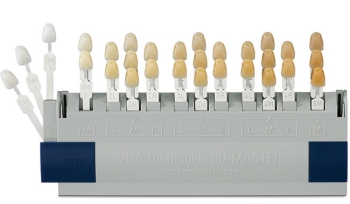
Perhaps you are taking medication which makes your teeth look yellow?
The first thing to say is that you should never stop taking any medication that has been prescribed to you without first consulting your doctor. It has however been reported that some medications may affect the colour of your teeth, most often this happens if the medication is taken during childhood whilst the teeth are still forming, rather than extrinsic staining of the teeth at a later date in adulthood.
Some medicated mouthwashes can also stain teeth, so please ensure that you read the label of any medicated mouthwash that you may have been prescribed.
Rest assured though, if your teeth have been stained through using a medicated mouthwash this can easily be removed by your dentist or hygienist.
Do you smoke?
Well, you knew this would probably come up at some point! Smoking darkens teeth because it changes the delicate PH balance in your mouth, it also dries your mouth out which leads to an excessive buildup of bacteria. This bacteria not only has a rather noticeable smell, but also can contribute to increased rates of dental decay.

The smoke itself also has many of these colouring components which, particularly when coupled with poor oral hygiene, can stain the teeth quite noticeably.
As a sidenote, if you have any damage to the gum in your mouth then smoking also slows down the healing process, just another reason to begin the quitting process.
You are older than you were yesterday!
It’s just a fact that as we age various things happened to our body! Gravity takes over and alas, our teeth can appear yellower. The reason for this isn’t because your teeth are actually going yellow, it’s because that as we get older the outer surface of the tooth (enamel) wears away, as the enamel wears away with age the yellower underlying dentine becomes more exposed. As that dentine nears the surface it has the effect of making the teeth look yellower.
This is often more prominent on the lower teeth towards the biting incisal edge. It can be noticed that there is significant yellowing or staining right on that chip area, this is known as secondary dentine and is a common concern with people in, shall we say, more senior years!
And the good news is…
The good news is that most of these problems can be quickly and simply resolved. If you give up smoking, look at your diet and ensure your oral health care routine follows the suggested procedure then you can have a big impact on the colour of your teeth. Your dentist can also whiten your teeth in a couple of ways.
If your teeth just have surface staining perhaps from smoking or food stains then this can be removed with an air abrasion technique. This blasts very small particles at the end at your teeth which very gently remove the surface stain. If however the enamel of your tooth is intrinsically not as white as you would like them teeth whitening could also be the perfect option for you.
What ever you decide, your friendly dentist in Harrow is here to help, please contact us today to book your appointment and begin your journey to brighter, whiter teeth.
How to Look After Children’s Teeth Properly
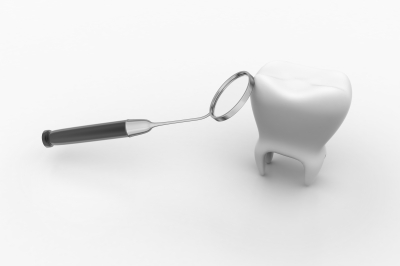
Most parents want to look after their children’s teeth in the best way possible but often find the advice given confusing or difficult to follow. In this blog post we set out to explain in simple terms the easiest way to look after children’s teeth, prevent future problems and keep visits to the dentist to the absolute minimum.
1. Brush using the right kit, in the right way at the right time
Using the right kit
Children have smaller mouths than adults, clearly and so need to have a smaller toothbrush. If you try to clean a child’s mouth with an adult’s brush you will find that you will be missing parts of their teeth, particularly right around the back teeth. Use a child’s toothbrush with a pea sized amount of Children’s toothpaste. Children’s toothpaste has a reduced amount of fluoride compared to adults toothpaste, this ensures that your child does not receive too much fluoride.
Brushing in the right way
Brush your children’s teeth twice per day. Up until the age of 7 we recommend brushing your children’s teeth for them and then supervising after this age. When you brush clean for 30 seconds in each quadrant, top left, top right, bottom left and bottom right ensuring that you clean the biting surface, tongue side and cheek side of your Children’s teeth.
Brushing for the right amount of time
The whole process should take 2 min and this should be done twice per day.
2. Maintain a healthy diet
 Maintaining a healthy diet is important for overall body health as well as dental health, but the two are linked. The simplest piece of advice, and probably the most important, is to watch the amount of sugar that your child has in their diet. It’s not just the added sugar (such as on cereal in the morning) it’s the hidden sugar in so many food items particularly fizzy drinks and processed food. A good way to monitor this is to use the governments sugar smart app which we have blogged about in the past.
Maintaining a healthy diet is important for overall body health as well as dental health, but the two are linked. The simplest piece of advice, and probably the most important, is to watch the amount of sugar that your child has in their diet. It’s not just the added sugar (such as on cereal in the morning) it’s the hidden sugar in so many food items particularly fizzy drinks and processed food. A good way to monitor this is to use the governments sugar smart app which we have blogged about in the past.
Sugar is so damaging because it feeds the acid excreting bacteria which cause dental decay. Limiting the amount of sugar your child eats will have a dramatic effect on tooth decay.
3. Visit your dentist

We would say that, wouldn’t we! But it’s true, your dentist is able to detect the early warning signs of gum disease and dental decay before you will notice it at home. They can advise on your child’s oral health care routine and let you know if there are areas that you are missing whilst you are cleaning. It’s extremely important to ensure that your child’s over all dental health remains in good condition throughout their lives, and this starts from an early age.
Many people mistakenly believe that because children lose their teeth that they don’t need to worry about looking after them…… they will get a new set after all. This is a misconception, the habits that we form at an early age will continue into later life. If your children don’t have a good oral health care routine with their baby teeth, why would they change that routine and habit when they lose their baby teeth? The reality is that they won’t and those same bad habits will continue through to the adult teeth… Which don’t get naturally replaced.
For further advice and information please request an appointment with our dental hygienist at our practice in Harrow, we’ll be happy to answer any questions and give you advice on your own dental health care routine.
Images courtesy of freedigitalphotos.net
Are Sports Drinks Destroying Your Teeth and a Risk to Your Health?
Some recent research from the University of Cardiff showed that of the 160 children that responded to their survey 89.4% of them stated that they drank sports drinks with half of them drinking them at least twice a week. These drinks are intended to improve performance and keep athletes hydrated and are not intended to be drank as recreational drinks, especially by young people.
Drinking these drinks has been marketed as being fashionable, trendy and often healthy which has led to a surge in popularity amongst the younger members of our population.
The main reasons for consuming these drinks was attributed to the nice taste (90% of respondents) With 80.4% of respondents purchasing the drinks from local shops. 77.9% of boys came to drink sports drinks during physical activity whilst only 48.6% of girls claimed the same thing however, more girls claim to drink socially, 51.4% compared to 48.5% for boys.
Alarmingly, a study reported in the independent.ie says that 55% of the sports drinks consumed at home rather than during any exercise at all!
The problem is not the sports drinks themselves, the problem is the fact that these drinks are formulated for enhanced exercise performance. The sugar in sports drinks is there to give fast absorption of carbohydrate so that the muscles can run at peak performance. Yet if these drinks are consumed with out the physical exercise then the body is not using the sugar in this way.
Lucozade sport, for example Contains 27 g of sugar or 7 teaspoons worth in a 750 mL bottle. The world health organisation recommends people consume a maximum of 50 g of added sugar per day, meaning one bottle of Lucozade sport is more than 50% of your daily recommended intake.
Obesity expert Dr Donal O’Shea says:
“If you’re a gold medal Olympian who’s burning 6,000 calories a day and can’t eat enough to replace that, maybe a sports drink is okay, but for everyone else they have no benefit,”

The government’s recent launch of their Change4Life campaign of the Sugar Smart app goes a long way to helping children understand how much sugar is contained in various drinks, because this is an app, children find it more interactive and a useful way to scan their favourite drinks to see how much sugar is included.
What are the risks to your dental health of too much sugar?
With written in other blog posts about the effects of too much sugar with regards to diabetes and obesity but there are also risks to your dental health.
Dental decay is caused by the acid excreting from the bacteria in your mouth, these bacteria feed prolifically on the sugar in your diet, the more sugar you have, the more they feed on the more acid they excrete.
In the most part your saliva neutralises this acid but it can only work to a certain degree, too much acid and it attacks your teeth and causes dental decay.
One of the biggest problems is that these bacteria lurk in between your teeth which is notoriously difficult to clean, this is why using an interdental brush or floss is absolutely vital for maintaining your dental health.
Bluecourt Dental Centre in Harrow, Middlesex can advise you on the best cleaning techniques and oral health advice in order to keep your teeth fresh and bright for life. They can also provide dietary advice and encouragement to children to drink healthy drinks rather than sports drinks designed for athletes.
Have your teeth become crooked again after having braces when you were younger?
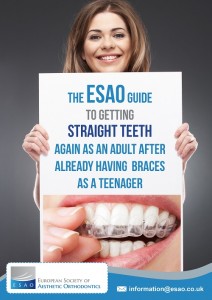 One of the most common reasons for patients visiting the dentist for teeth straightening is relapse after having orthodontics when they were younger. Patients often find that once they stop wearing their retainers that their teeth can begin to move back to where they were before. Coupled with the fact that as we get older our teeth have a tendency to drift forwards and become more overcrowded.
One of the most common reasons for patients visiting the dentist for teeth straightening is relapse after having orthodontics when they were younger. Patients often find that once they stop wearing their retainers that their teeth can begin to move back to where they were before. Coupled with the fact that as we get older our teeth have a tendency to drift forwards and become more overcrowded.So what is the solution?
Rapid Tooth Straightening
- Six Month Smiles
- Inman Aligner
- CFast
Six Month Smiles
 As the name suggests Six Month Smiles offers orthodontics which take, on average, six months to achieve the new look. The system is fixed using tooth coloured wires and brackets to ensure that no one else knows that you have braces fitted. As with most of these aesthetic orthodontic options Six Month Smiles is only used to straighten the front six teeth, often known as the social six.
As the name suggests Six Month Smiles offers orthodontics which take, on average, six months to achieve the new look. The system is fixed using tooth coloured wires and brackets to ensure that no one else knows that you have braces fitted. As with most of these aesthetic orthodontic options Six Month Smiles is only used to straighten the front six teeth, often known as the social six.Inman Aligner
Cfast
Almost Invisible Tooth Straightening
Clear Aligners
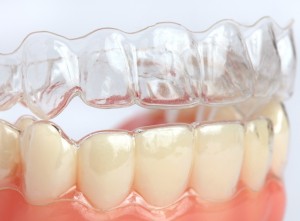 Clear Aligners are exactly that, completely clear. They work by moving your teeth a small amount at a time. You will be provided with a series of aligners which you will typically wear for about two weeks each. Each aligner puts a small amount of pressure on your teeth to move them or rotate them to their new position. Once your teeth have moved a tiny amount you will replace the aligner with the next one in the series.
Clear Aligners are exactly that, completely clear. They work by moving your teeth a small amount at a time. You will be provided with a series of aligners which you will typically wear for about two weeks each. Each aligner puts a small amount of pressure on your teeth to move them or rotate them to their new position. Once your teeth have moved a tiny amount you will replace the aligner with the next one in the series.In Summary
- Dr Dixit is the new President of British Academy of Cosmetic Dentistry - 28 May 2020
- Does Invisalign hurt? - 9 March 2020
- How Long Does Invisalign Take? - 27 February 2020
How much sugar is too much sugar?
In the dental profession we have been warning about the intake of too much sugar for many years, but why is this? It was originally the ancient Greeks that noticed that if they ate too many soft sweet things it destroyed their teeth, at first they thought it was the sugar which was directly responsible for attacking the teeth however we know today that this is not the case.
When you eat sugar not only does it act as a food for you, it acts as a food for the streptococcus bacteria in your mouth. As these bacteria feed on the sugar they excrete acids and it is these acids which eat away and attack the enamel outer layer of your teeth. These bacteria can be found in the plaque which often collects in between teeth or around the tooth/gum margin, this is why it is important to keep your teeth cleaned daily, flossing and rinsing to ensure that the plaque does not build up and give somewhere for the bacteria to hide.
So, back to our original question..
How much sugar is too much sugar?
The Journal of Dental Research carried out a systematic review to inform WHO guidelines on the effects of restricting sugar intakes in various age groups. The research looked at % of sugar in a daily diet and its relationship to the onset of decay. The problem has been that the research has been interpreted misguidedly.
Various newspapers have unfortunately taken the step of converting this % of sugar into a spoonful amount, probably to make it easier for the general public to work out how much sugar they should be having. These Papers have converted this into between 5 and 7 teaspoons per day. Unfortunately doing this leads people to assume that they can have 5 or 7 teaspoons per day on their cereal, coffee , tea or anywhere else they add sugar.
The biggest problem is they forget that most of the sugar we eat daily is hidden within foods, not added by us afterwards. If we only count the spoonfuls of sugar we add to our food then we will be dramatically exceeding the recommended amounts!
The research reported the following results in their abstract:
- 42 out of 50 of the studies in children, and 5 out of 5 in adults, reported at least one positive association between sugars and dental decay
- there was “moderate quality” evidence showing a lower risk of dental decay when sugar intake is less than 10% of calorie intake, compared with more than 10%
- there was “very low quality” evidence showing a lower risk of dental decay when sugar intake is less than 5%, compared with 5-10% of calorie intake
So it seems that the research is suggesting if we keep our sugar intake below 10% of calorie intake then there is ‘moderate quality’ evidence to show a lower risk of dental decay… So perhaps we should start doing that!
How do we know how much sugar we are eating?
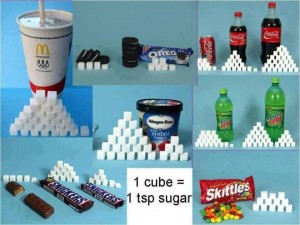
We thought we’d give a rough guide to the amount of sugar contained within various food stuffs so that you can be sure to keep your intake ideally less than 10%.
- A can of Coke contains approximately 11 spoonfuls of sugar increasing to 28 spoonfuls in the largest bottle
- a McDonald’s Coke also contains 28 spoonfuls of sugar
- a tub of Haagen Das ice cream contains 21 spoonfuls of sugar
- the average chocolate bar contains around 10 spoonfuls of sugar
- one breakfast pop tarts contains approximately 4 1/2 spoonfuls of sugar
- One bowl of frosted cornflakes contains 6 spoonfuls of sugar
- One NutriGrain Contains 3 1/2 spoonfuls of sugar
- A Starbucks Mocha Frappuccion contains 12 spoonfuls of sugar
- A McDonald’s Medium chocolate milkshake contains 28 spoonfuls of sugar
Statistics taken from Sugar Stacks – They have included all forms of sugar in these statistics and have simply turned it into a ‘spoonfuls’ amount to make it easier to understand.
Summary
Research over the years has clearly shown that Eating too much sugar will directly impact oral health, the only question lies around exactly how much is too much. The new research seems to suggest that when we keep sugar intake below 10% (Or around 5 to 7 spoonfuls of all sugar intake per day) there is moderate quality evidence showing a lower risk of dental decay, and that can only be good.
Our advice therefore is to look at the quantity of sugar in the food that you eat, remember that sugar can be from many sources and it’s not just the sugar which we add to food that counts.
So how much sugar do you eat per day? Let us know in the comments section below this blog post, and then tell us what you’re going to do to cut down…


